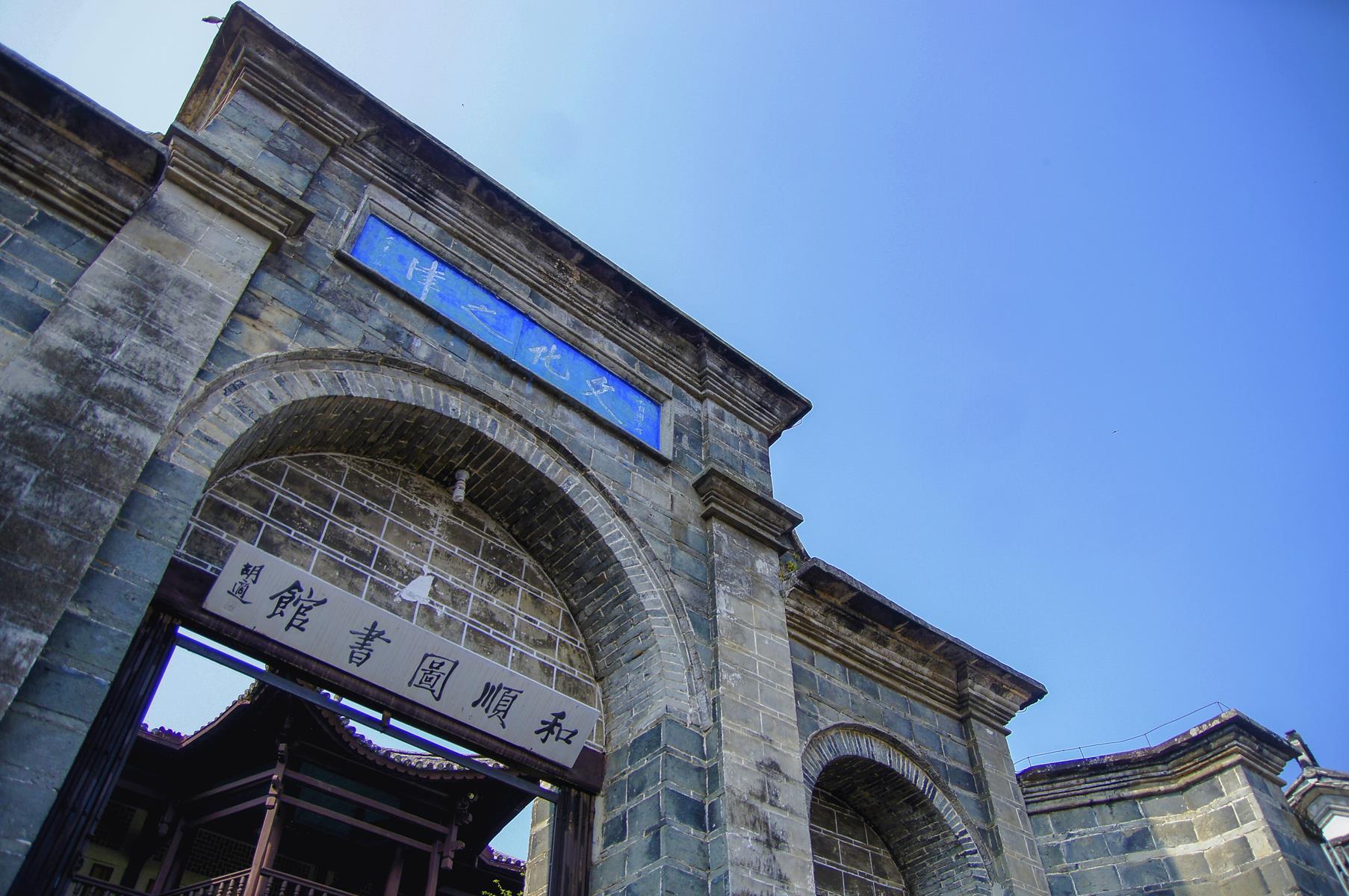
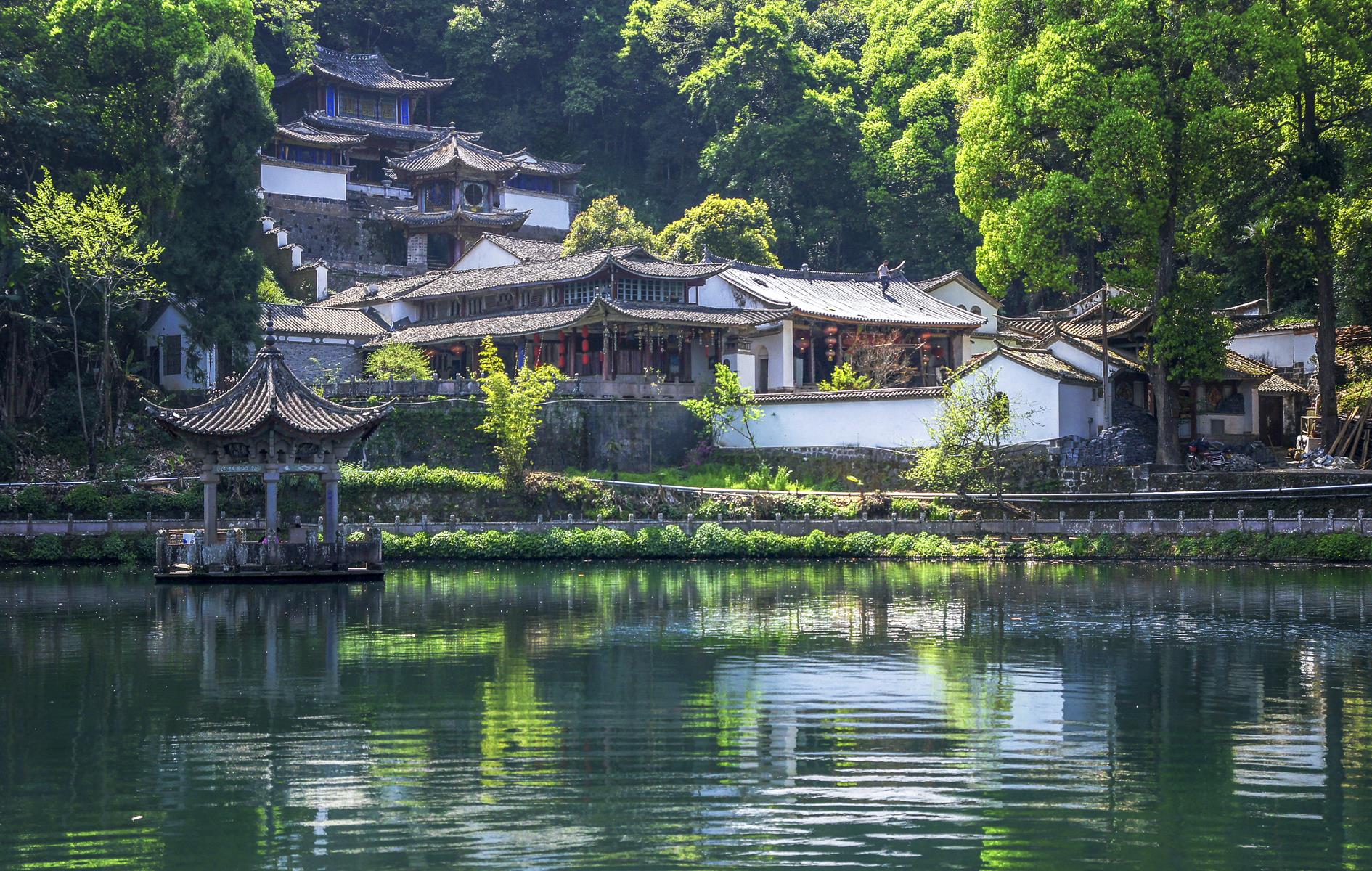
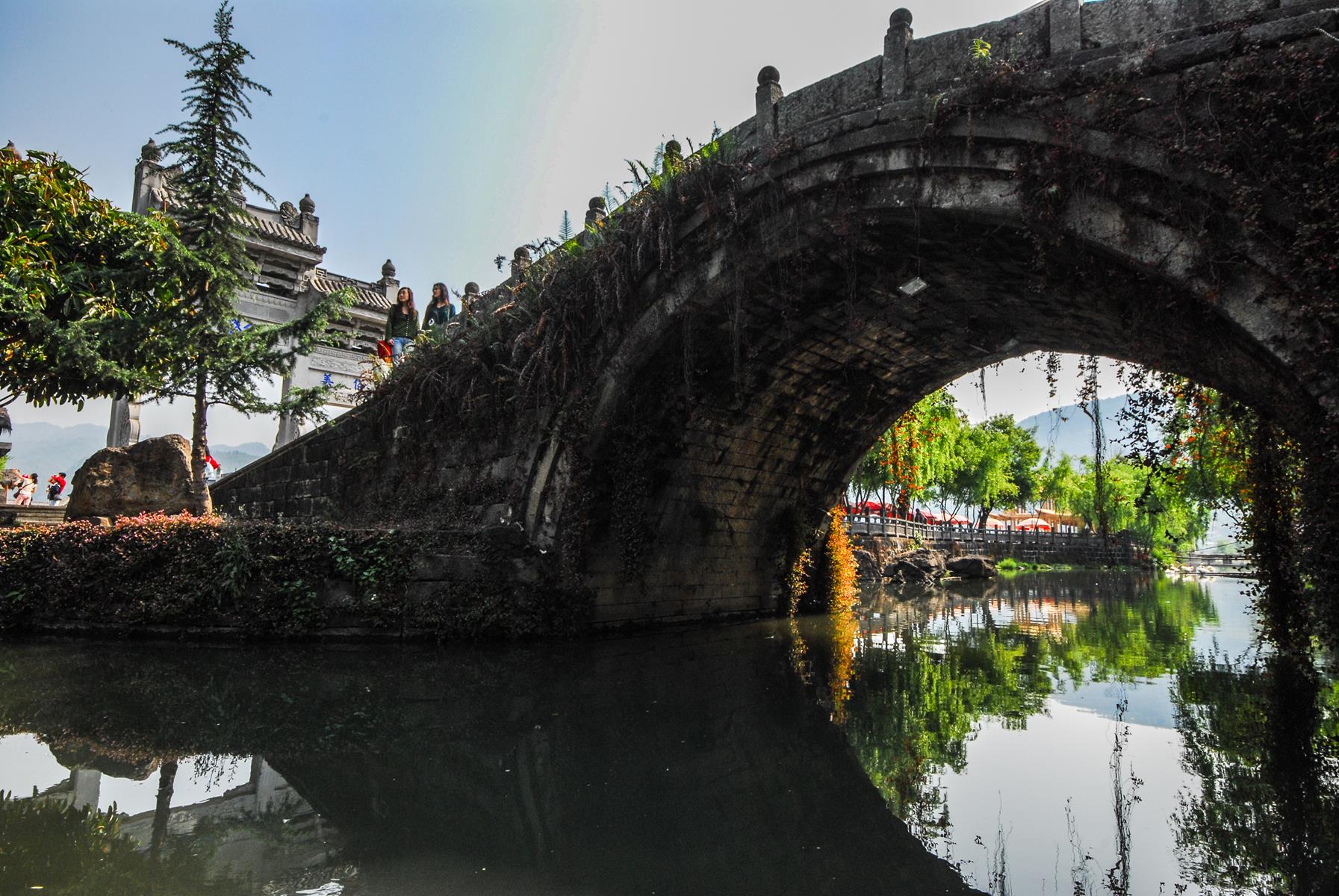
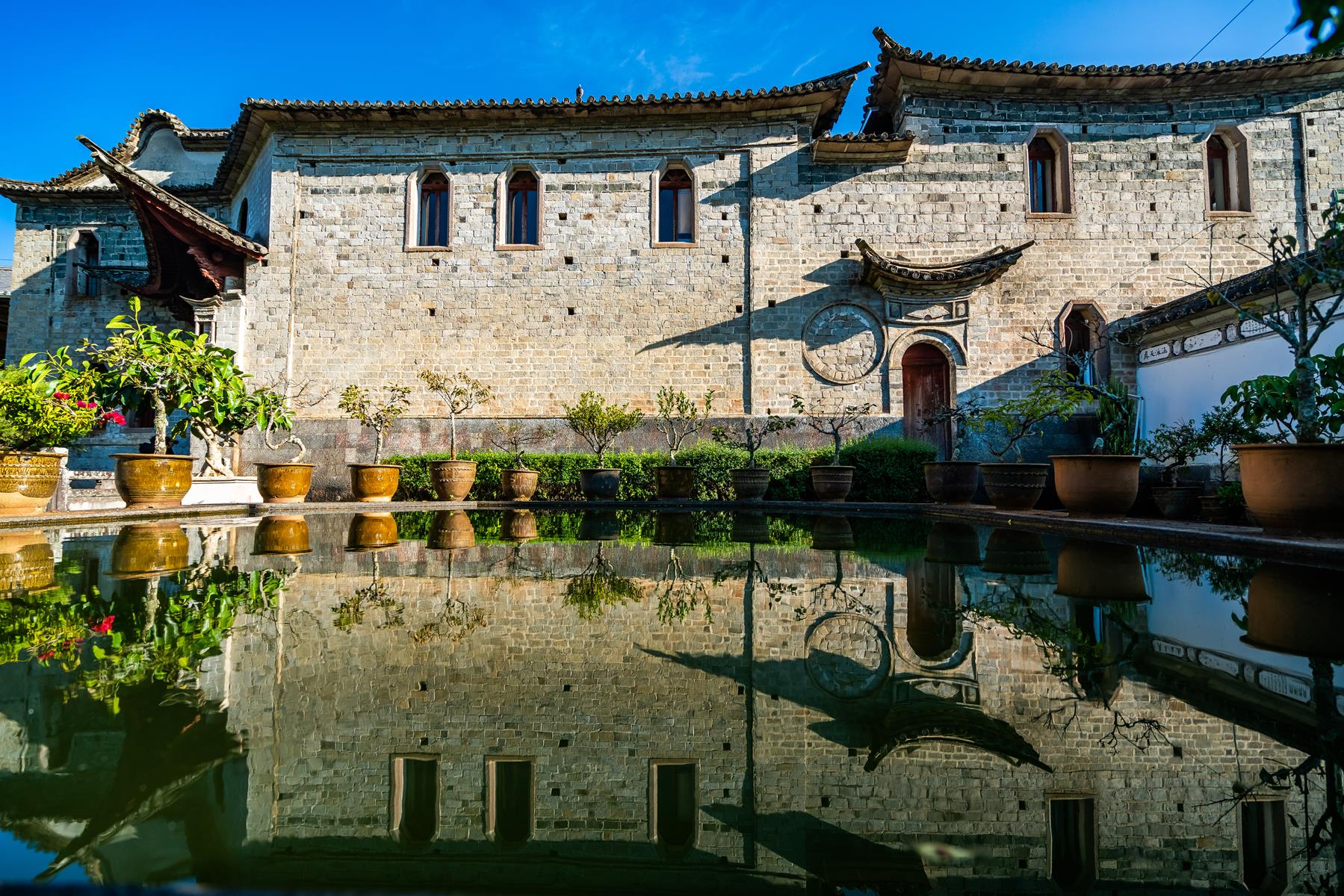
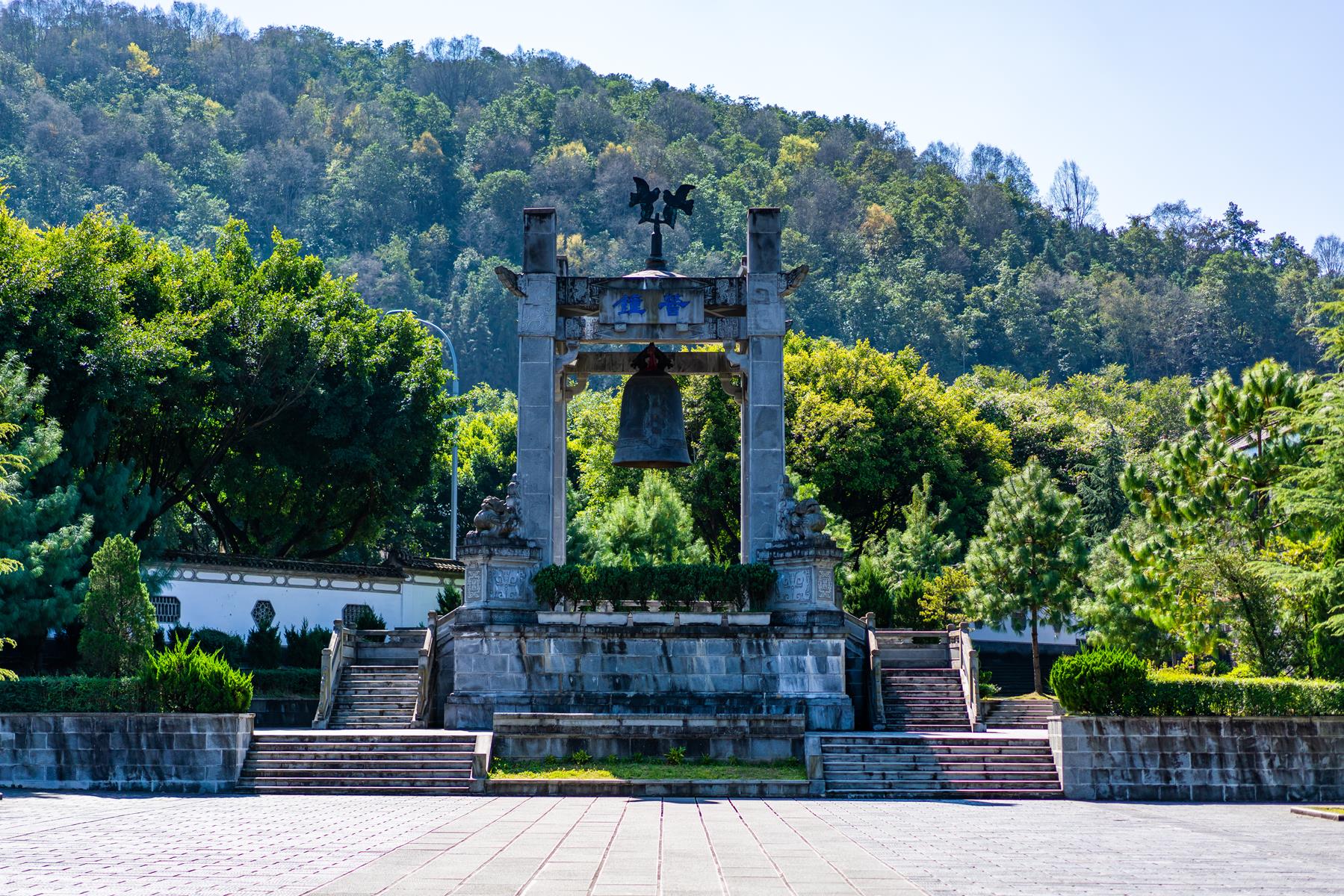
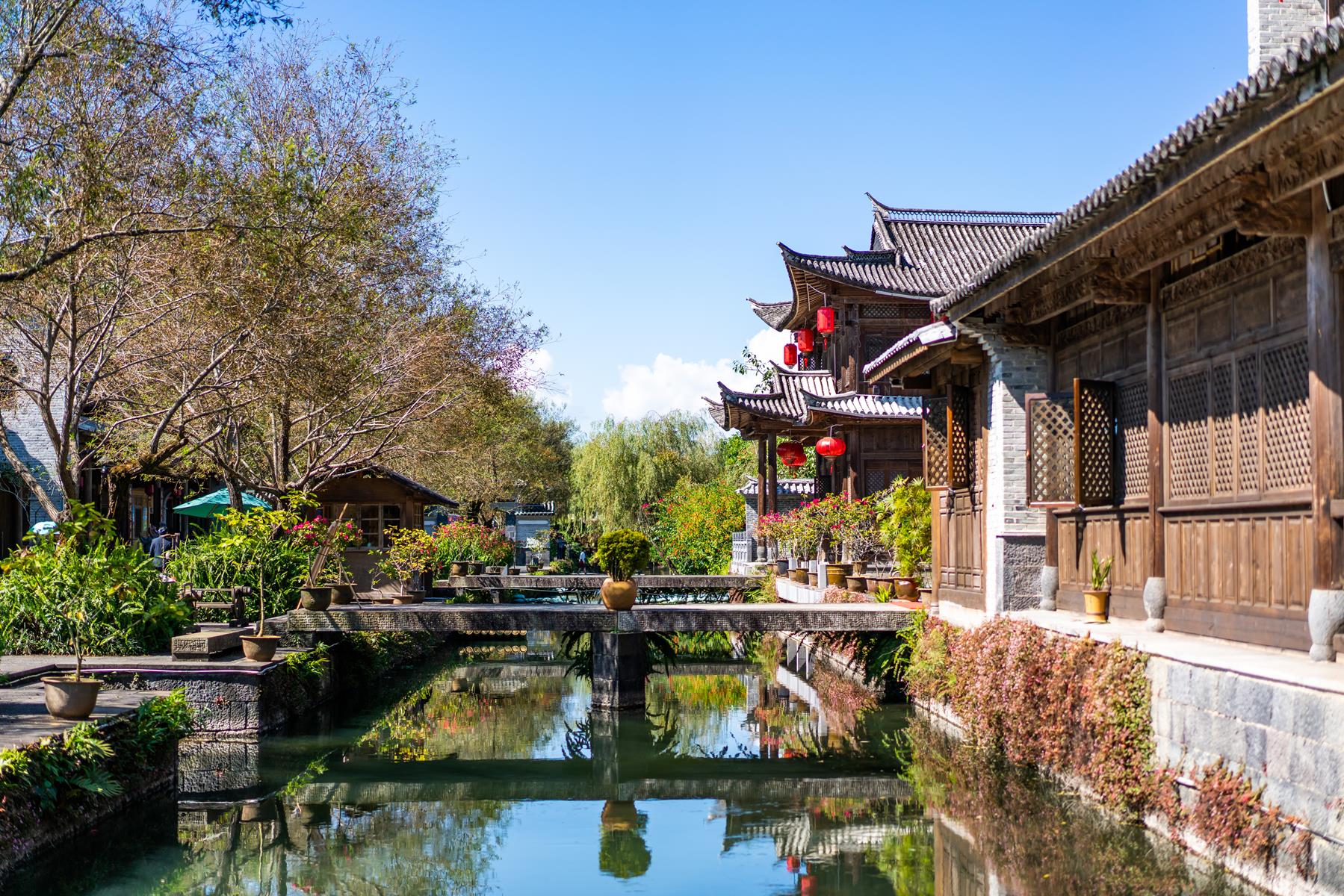
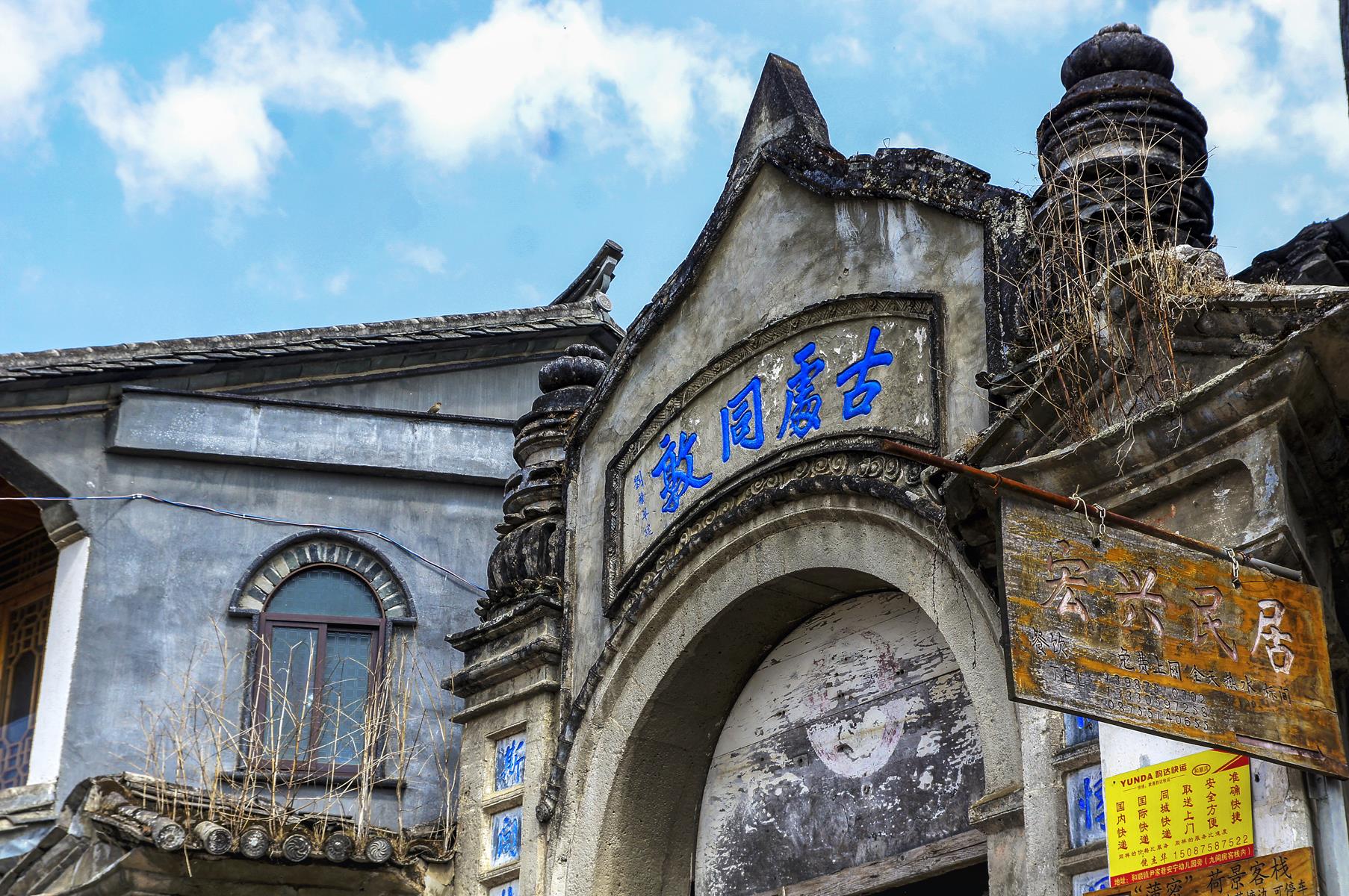
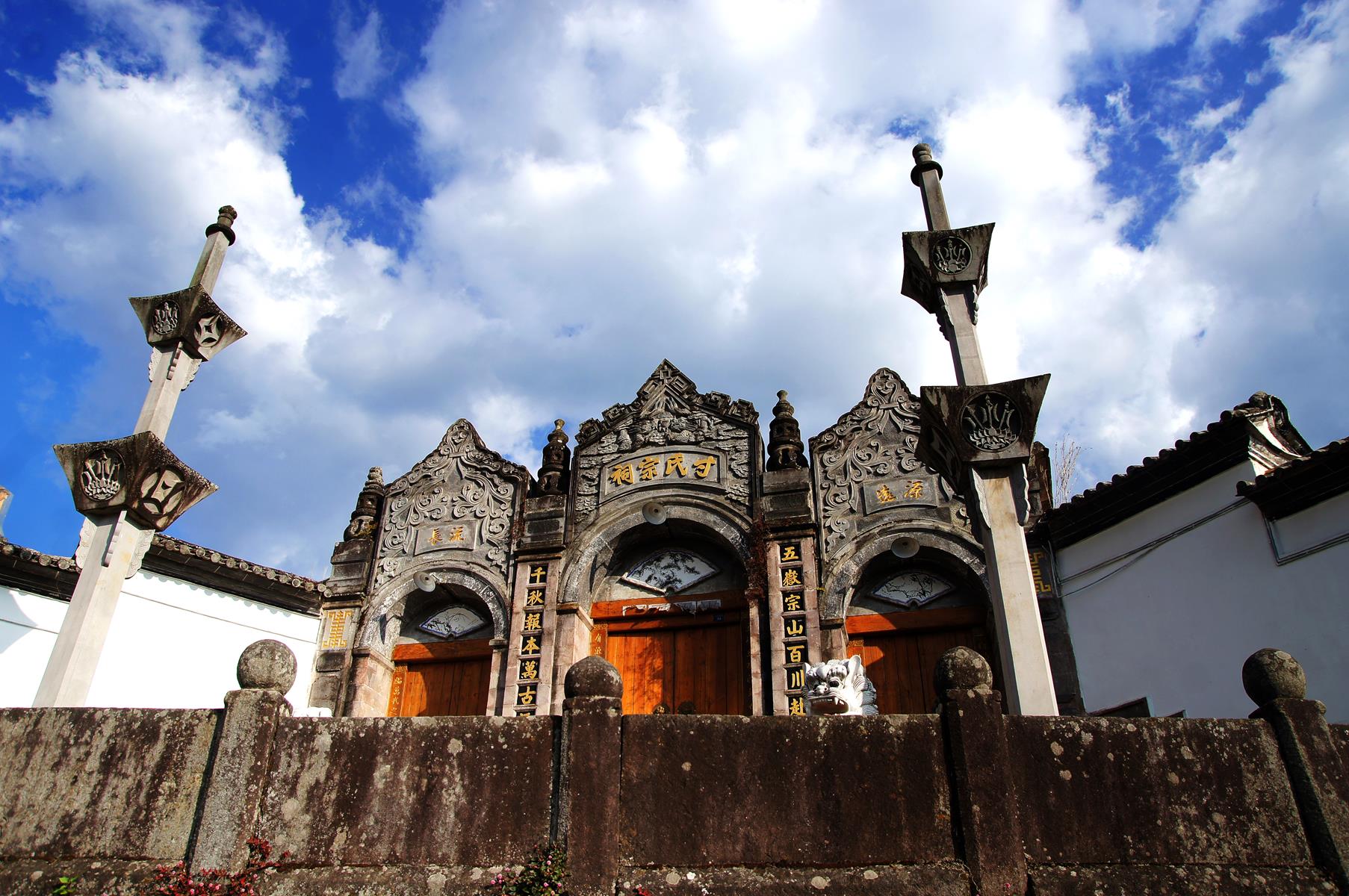
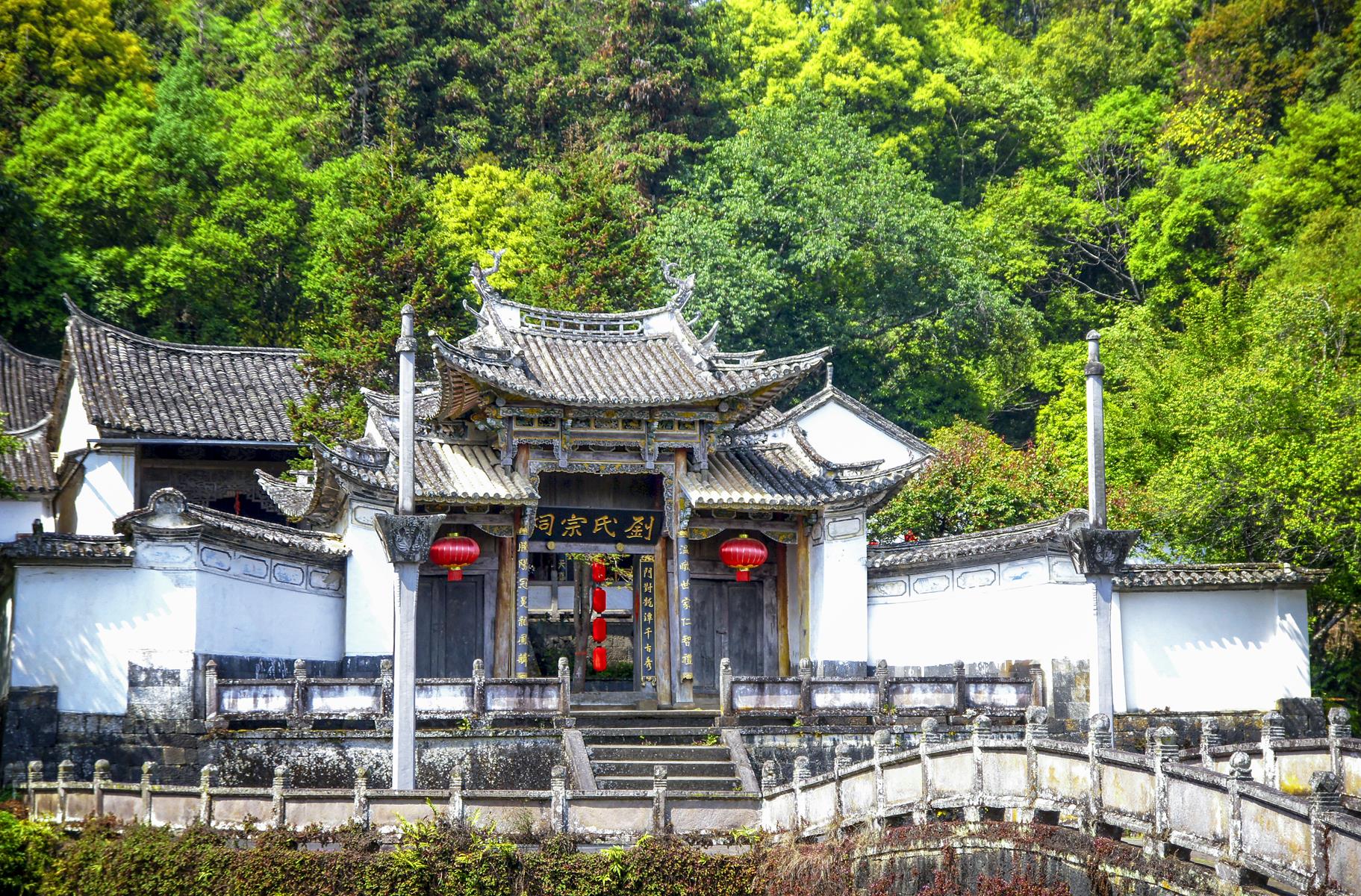
Heshun Town (Chinese: 和顺镇; pinyin: Héshùn Zhèn) is an ancient town in Tengchong City, three kilometers (two miles) southwest of Tengchong County, Baoshan City, Yunnan Province, and is over 600 years old. Here, more than 1,000 old buildings are spread around the mountain foothills and gradually rise from east to west, including ancestral halls, arches and ancient folk houses.
Heshun is well known for its quadrangle courtyards that have been built into the town's hills. It was once an important stop on the Ancient Tea Horse Road. Up until the mid-twentieth century, you might still see the occasional tea, pony or jade porter making their way to Tibet or Burma. Today, it remains one of the better-preserved old towns in the entire province.
The buildings are mostly in the mixed style of Chinese and Western. The predominance of this style is due to the fact that Heshun was established as a trading and military outpost during the reign of Ming dynasty emperor Zhu Yuanzhang (朱元璋). As part of the government's 'border cultivation' program, Han Chinese were brought from China's central provinces to solidify the Ming presence at a time when Yunnan was a distant frontier.
Another reason is that Heshun is along the ancient “Southwest Silk Road”, through which the architectural style of South Asia and Southeast Asia appear. For 400 years, Heshun has been the 'hometown of overseas Chinese'. Its current population is just over 6,000, but the vast majority of Heshun natives live overseas, most of them in Myanmar, which is only 70 kilometres away. Other overseas Chinese are in 13 countries and regions, including Thailand and Japan. Therefore, the architecture of the ancient town combines the styles of the water town of Wuzhen in the Jiangnan region, the fairy tale town of Santorini, and the historical ancient city of Varanasi.
There are six Laundry Pavilions built during the Qing Dynasty (1644 - 1911 AD). The Pavilions, also known as Xiyi Pavilions, are not only a peculiar sight, but also a reflection of traditional culture in Heshun Ancient Town. It is said that the men in Heshun built them in order to prevent their wives from being exposed to the wind, rain and sun while doing the laundry. A simple and sincere expression of love from Heshun men for their wives.
Heshun Library, established in 1924 by overseas Chinese, is one of the largest rural libraries in China. It is a two-storey traditional Chinese building, with a beautiful front garden. There are more than 10,000 books in the library, many of which are precious ancient Chinese books.
The museum is the first museum in China that is funded by the local citizens and has the theme of the war of resistance. You can go on a journey of historic discovery through a large number of old photographs, documentaries, historical materials, oil paintings, comic strips and other collections in the museum.
Strolling around town, it is quite apparent that Heshun's Han settlers stayed true to their roots. The central tenet of Confucianism is respect for your ancestors, which is why Heshun has eight intact ancestral halls (宗祠). Many of China's ancestral halls were destroyed during the Cultural Revolution, but several in Heshun were spared, possibly due to the region's relative isolation.
Nonetheless, Heshun has plenty to offer for connoisseurs of pastoral charm, and you can be confident that the slow pace of life will not disappear altogether. Even today, Heshun's pedestrian-only streets still hark back to Chinese village scenes of the past.
Tengchong City, Yunnan Province, China
- In Heshun, the average annual temperature is 16.0 °C.
- There are flights available from Kunming to Baoshan. From there, tourists can take a coach to Tengchong. Visitors should take a taxi to Heshun village.















